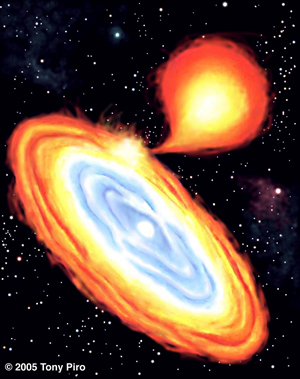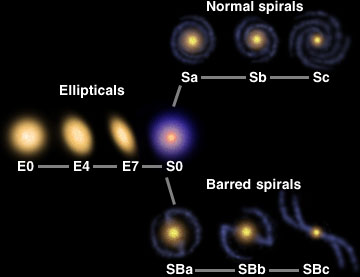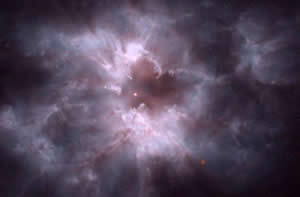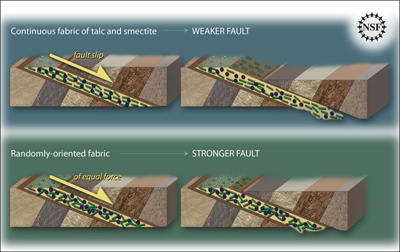Click on image for full size
Credit: Tony Piro (2005)
Unusual Explosion Sparks New Insight Into the Life of Stars
News story originally written on November 5, 2009
An unusual explosion in a galaxy about 160 million light years away has helped scientists learn about another way that stars explode.
The more astronomers learn about how stars explode, the more we will understand how the Universe changes over time. These explosions influence the formation of stars and the growth of galaxies, and they produce nearly all of the metals that form the cores of planets like Earth.
The explosion made a flash of light that could be seen from Earth in 2002. Scientists thought it was an ordinary type of supernova, an explosion that destroys a massive star. But after re-examining data recorded by a telescope, they realized that this wasn’t just any ordinary exploding star.
The explosion's light didn't look like a typical supernova. It was much less bright and was three to four times faster.
This may not be a supernova at all, suggest scientists. Instead, two white dwarf stars orbiting around each other may have caused it.
White dwarfs are the ultimate end of stars like the Sun. They are very dense, with the mass of an entire star packed into a space roughly the size of Earth. When two white dwarfs orbit close together, matter flows from one to the other. This allows a thick layer of helium to build up. That helium can explode, which is what scientists suspect happened during this 202 event.
"We think this may well be a new physical explosion mechanism," said astronomer Alex Filippenko, one of the team’s scientists. "It whets my appetite for what else we might find."















